Guoli Yin
Instruction-Following Pruning for Large Language Models
Jan 07, 2025



Abstract:With the rapid scaling of large language models (LLMs), structured pruning has become a widely used technique to learn efficient, smaller models from larger ones, delivering superior performance compared to training similarly sized models from scratch. In this paper, we move beyond the traditional static pruning approach of determining a fixed pruning mask for a model, and propose a dynamic approach to structured pruning. In our method, the pruning mask is input-dependent and adapts dynamically based on the information described in a user instruction. Our approach, termed "instruction-following pruning", introduces a sparse mask predictor that takes the user instruction as input and dynamically selects the most relevant model parameters for the given task. To identify and activate effective parameters, we jointly optimize the sparse mask predictor and the LLM, leveraging both instruction-following data and the pre-training corpus. Experimental results demonstrate the effectiveness of our approach on a wide range of evaluation benchmarks. For example, our 3B activated model improves over the 3B dense model by 5-8 points of absolute margin on domains such as math and coding, and rivals the performance of a 9B model.
ToolSandbox: A Stateful, Conversational, Interactive Evaluation Benchmark for LLM Tool Use Capabilities
Aug 08, 2024
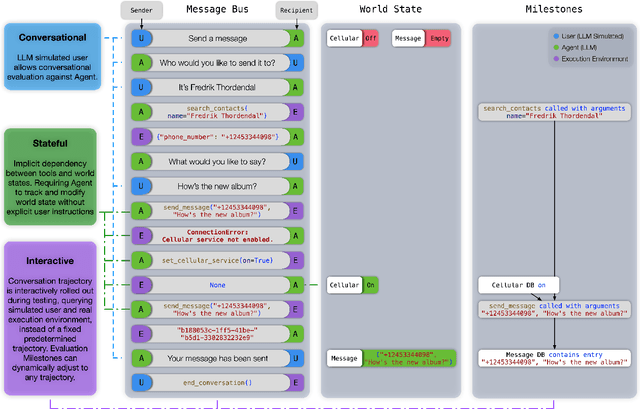
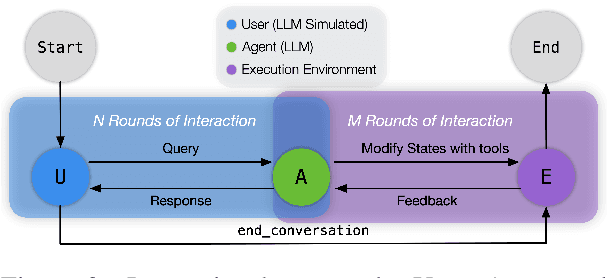
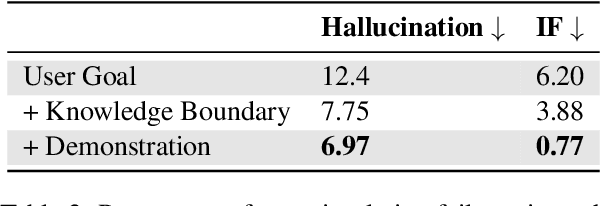
Abstract:Recent large language models (LLMs) advancements sparked a growing research interest in tool assisted LLMs solving real-world challenges, which calls for comprehensive evaluation of tool-use capabilities. While previous works focused on either evaluating over stateless web services (RESTful API), based on a single turn user prompt, or an off-policy dialog trajectory, ToolSandbox includes stateful tool execution, implicit state dependencies between tools, a built-in user simulator supporting on-policy conversational evaluation and a dynamic evaluation strategy for intermediate and final milestones over an arbitrary trajectory. We show that open source and proprietary models have a significant performance gap, and complex tasks like State Dependency, Canonicalization and Insufficient Information defined in ToolSandbox are challenging even the most capable SOTA LLMs, providing brand-new insights into tool-use LLM capabilities. ToolSandbox evaluation framework is released at https://github.com/apple/ToolSandbox
Apple Intelligence Foundation Language Models
Jul 29, 2024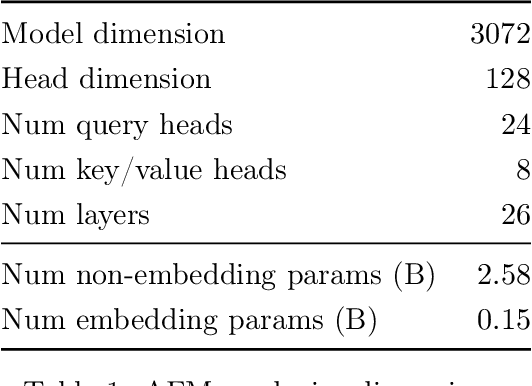
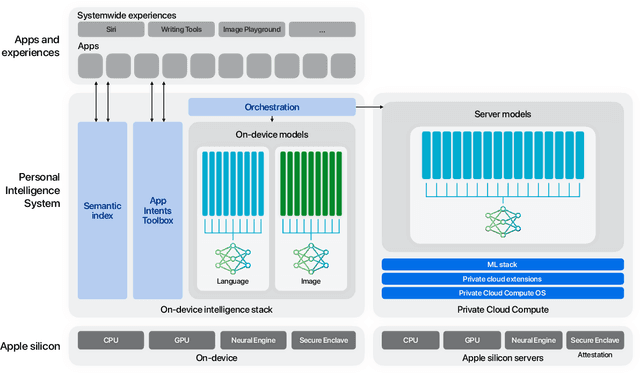

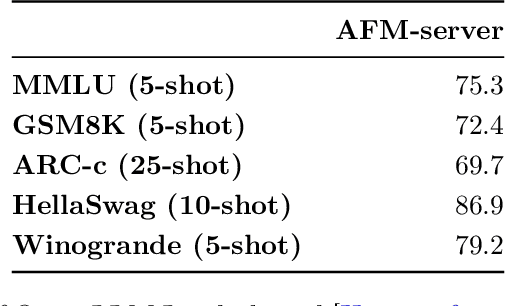
Abstract:We present foundation language models developed to power Apple Intelligence features, including a ~3 billion parameter model designed to run efficiently on devices and a large server-based language model designed for Private Cloud Compute. These models are designed to perform a wide range of tasks efficiently, accurately, and responsibly. This report describes the model architecture, the data used to train the model, the training process, how the models are optimized for inference, and the evaluation results. We highlight our focus on Responsible AI and how the principles are applied throughout the model development.
MM1: Methods, Analysis & Insights from Multimodal LLM Pre-training
Mar 22, 2024



Abstract:In this work, we discuss building performant Multimodal Large Language Models (MLLMs). In particular, we study the importance of various architecture components and data choices. Through careful and comprehensive ablations of the image encoder, the vision language connector, and various pre-training data choices, we identified several crucial design lessons. For example, we demonstrate that for large-scale multimodal pre-training using a careful mix of image-caption, interleaved image-text, and text-only data is crucial for achieving state-of-the-art (SOTA) few-shot results across multiple benchmarks, compared to other published pre-training results. Further, we show that the image encoder together with image resolution and the image token count has substantial impact, while the vision-language connector design is of comparatively negligible importance. By scaling up the presented recipe, we build MM1, a family of multimodal models up to 30B parameters, including both dense models and mixture-of-experts (MoE) variants, that are SOTA in pre-training metrics and achieve competitive performance after supervised fine-tuning on a range of established multimodal benchmarks. Thanks to large-scale pre-training, MM1 enjoys appealing properties such as enhanced in-context learning, and multi-image reasoning, enabling few-shot chain-of-thought prompting.
 Add to Chrome
Add to Chrome Add to Firefox
Add to Firefox Add to Edge
Add to Edge